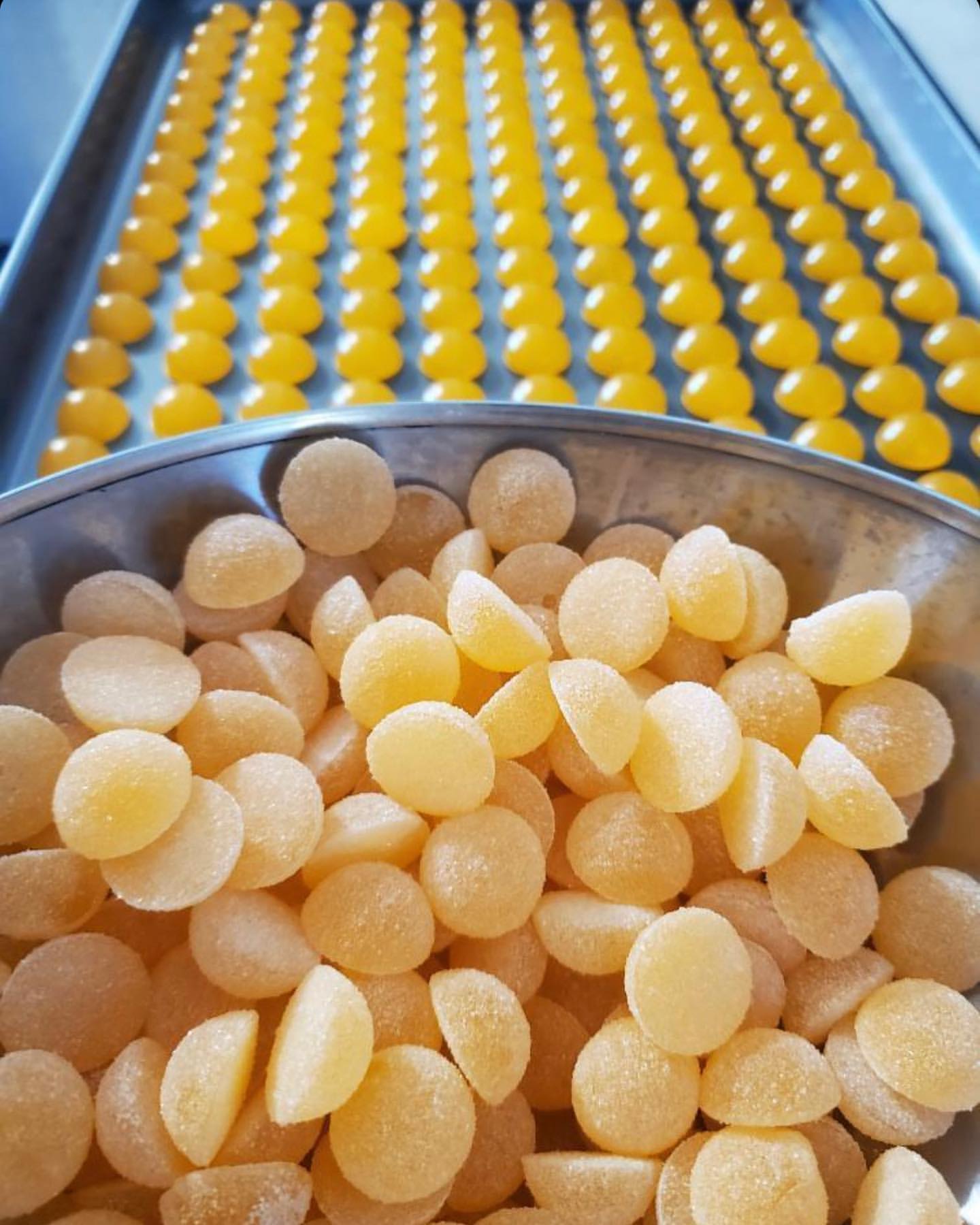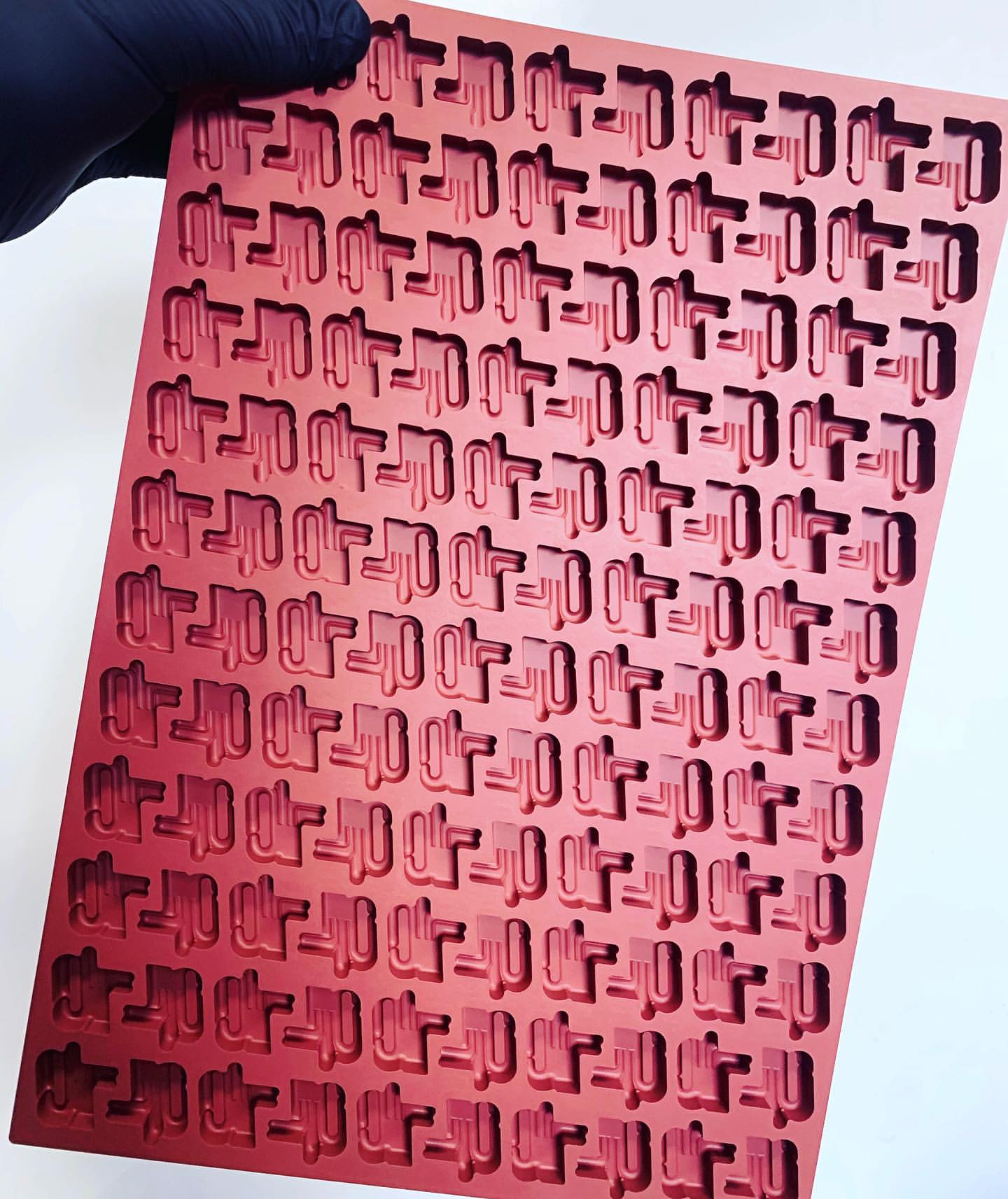As anyone who's been in this industry for 5 seconds already knows:
Water-related concerns are the stuff of gummy-makers' nightmares!
From relative humidity to excess water in the slurry, asymmetrical curing, and sweating & sticky gummies-- each factor can make or break the quality of your final product, undermine operations, and hurt your brand.
Not good.
So it is CRUCIAL that you learn how to fix these all too common water-related gummy making problems.
In this blog post, I'll share some insights and tips on how to address these common water-related concerns when making gummies professionally.
1. Controlling Relative Humidity in Your Curing Area
Relative humidity is a simple percentage measurement of the amount of water vapor in the air.
And it is acritical factor to consider when making gummies.
It affects the drying and curing process, which in turn affects the texture, appearance, and overall quality of the final product.
Ideally, you want to keep the relative humidity in your curing area to a steady middle-range.
This can be achieved by isolating the area and using a dehumidifier to control the humidity levels.
The smaller the isolated area, the easier it is to control the humidity.
Also, keeping the doors closed and minimizing the air exchange will help maintain a consistent relative humidity.
2. Managing Excess Water in Your Gummy Slurry
The amount of water in your gummy slurry itself is another important consideration.
Too much water can prolong the cooking and drying time, while too little can affect the emulsification and hydration of the ingredients.
You can experiment with reducing the water by 5-10% once you're comfortable with the recipe to help hit your desired brix level more quickly.
But note: you have to be sure the pectin is sufficiently hydrated before reducing the water.
A lot of technical details here. Check out DCM's Gold Standard Recipes & SOPs for an in-depth framework for taking control of YOUR unique recipe.
Loving these tips so far? Follow us on Instagram for more!
3. Addressing Asymmetrical Curing and Drying of Gummies
When curing in a mold, one common problem is the asymmetrical drying of the gummies.
Obviously the quality of the molds matters a lot here. High quality molds will give you more uniform curing and reduced set times, if using an optimized recipe.
But in general, the sides that are in contact with the mold tend to retain more moisture, and therefore a stickier surface, for longer.
And the side that is exposed to the air, of course, tends to dry out faster.
While having a gummy that is too sticky is clearly not desirable, some stickiness is optimalwhen coating your gummies in sugar.
Ideally, you want that level of stickiness to be as uniform as possible.
To address this, you can sugar coat the gummies in the mold while the top is still sufficiently sticky, then tumble the whole gummy in sugar once it's out of the mold.
Alternatively, you can also place parchment paper over the top to keep the moisture from escaping into the ambient air while drying, keeping the top surface nice and sticky.
4. Preventing Sweating and Overly-Sticky Gummies
Sweating and overly-sticky gummies can be a frustrating issue to deal with, but it can be prevented by controlling the water activity of the gummies.
How to do this? Glad you asked. Check out this article for more information on the crucial tools you'll need for your business.
It's also important to seal your gummies at the right time. Make sure to bag your gummies when the water activity is at the desired level.
The above is how you fix sticky gummies before they even get that way in the first place.
But you can also address this on the other end of the production line, by adjusting the type of citric acid that you use in your sugar coating.
You want to be using anencapsulatedcitric acid in your sugar coating. This product will help mitigate the natural tendency of citric acid-based sugar coatings to draw out moisture.
Follow these tips to help maintain the texture and appearance of your gummies.
–
It’s obvious to anyone getting in the gummy game: water-related concerns are a hugely important aspect of making gummies professionally.
But by dialing in relative humidity, managing excess water, addressing asymmetrical drying, and preventing stickiness and sweating; you can produce high-quality gummies that look and taste great.
Love the above tips but need more focused assistance in dialing in the aspects of your unique production environment? Reach out to DCM today, and we’ll help you gain mastery over your operation, and take your gummy-making game to the next level.




